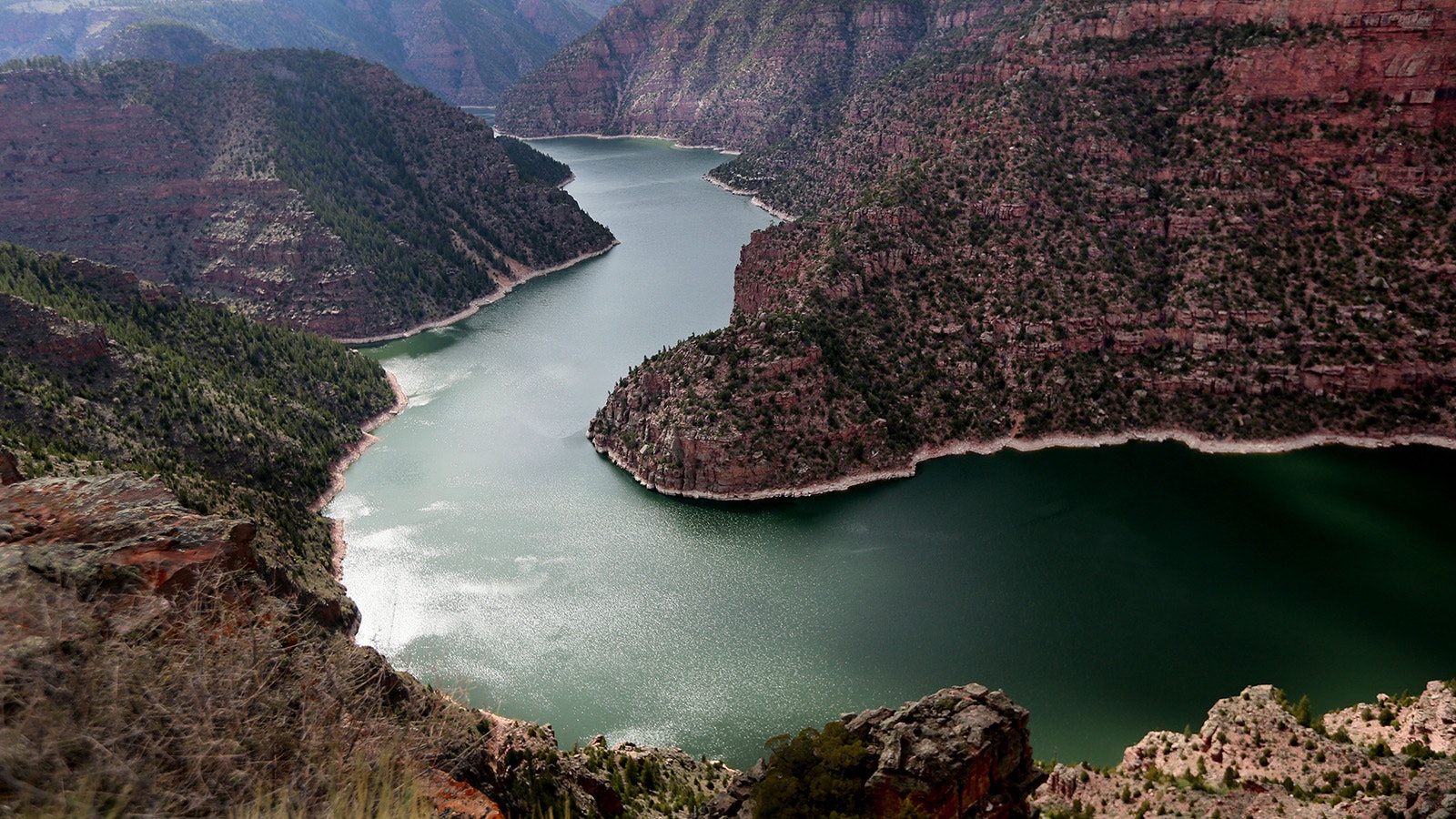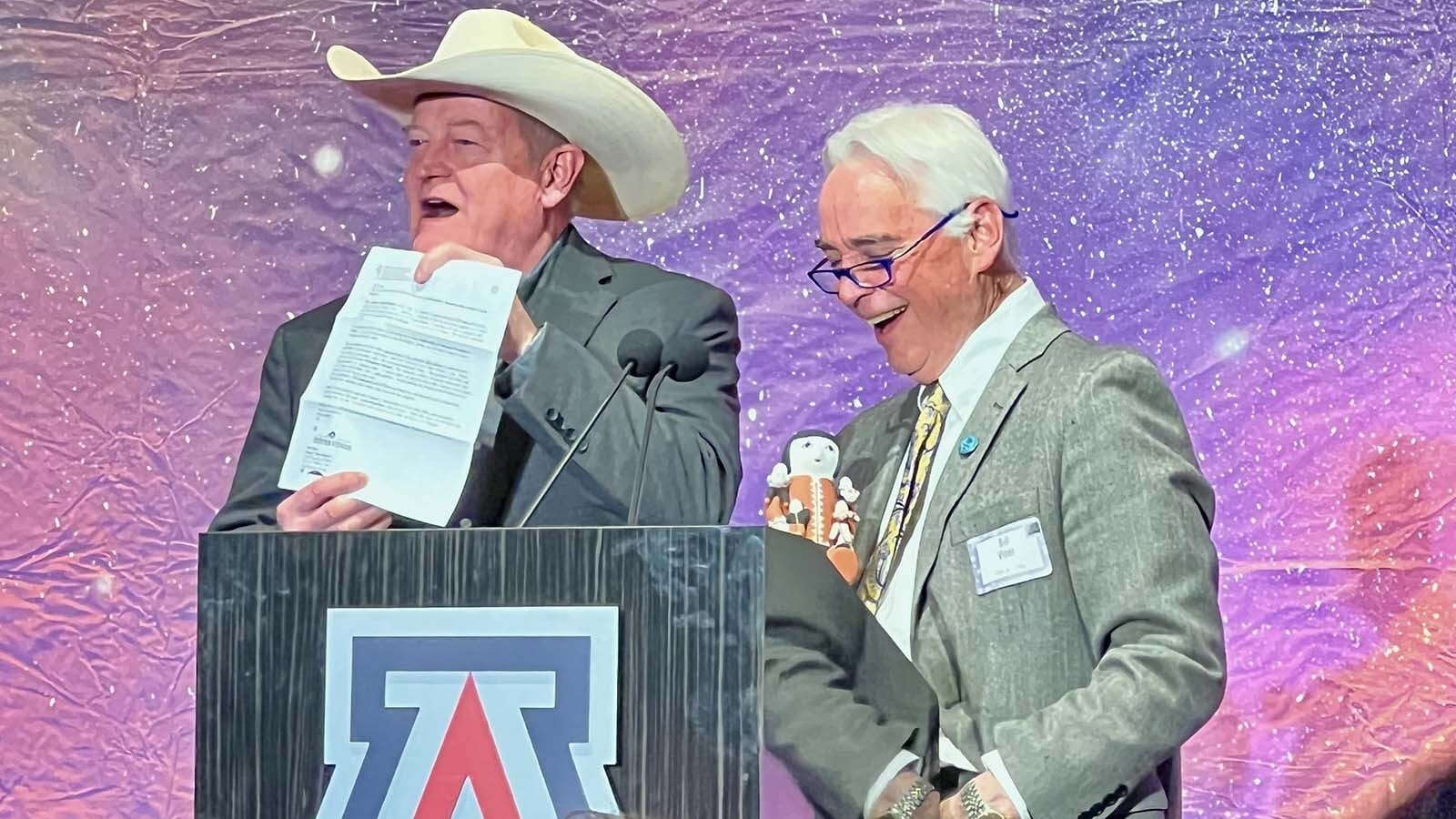The 100-year-old pact that allocates water use along the Colorado River among several states and two countries isn’t doing Wyoming any favors, a state lawmaker says.
Although growth and drought have sapped the Colorado, the other parties to the pact “can’t come back to Wyoming and say, ‘Wyoming, you’re not populated.’ Because when they appropriated their water use, they weren’t populated either,” Sen. Anthony Bouchard, R-Cheyenne, told Cowboy State Daily.
He was referring conditions contained in the 1922 Colorado River Compact, which lays out water rights for Wyoming, Colorado, Utah, New Mexico, Arizona, Nevada and California.
Mexico, where the Colorado River runs into the ocean, also is allocated 1.5 million acre-feet of water a year from the river. An acre foot of water is the amount that would submerge an acre of land to the depth of a foot, or 325,851 gallons.
Thirty Native American Tribes along the Colorado River also have water rights.
In the simplest of terms, there are too many people wanting a dwindling supply of water, Bouchard said.
The amount of growth since 1922 – particularly in desert cities such as Las Vegas and St. George, Utah – has put unrealistic demands on the river, Bouchard said.
And as a headwaters state, Wyoming stands to lose more than it could ever gain from the agreement.
“It’s not sustainable,” he said.
Different Time, Different River
A water conservation expert agrees that the 1922 compact has probably outlived its usefulness.
The conditions under which the Colorado River Compact was drawn up were nothing like what they are today, Colorado resident Erich Kuhn told Cowboy State Daily.
He retired in 2018 from a career with the Colorado River Conservation District. He’s also the co-author of “Science Be Dammed: How Ignoring Inconvenient Science Drained the Colorado River.”
“The main thing to understand is, when they negotiated the compact 100 years ago, their understanding of the hydraulics of the river was nothing like it is today,” he said.
As Bouchard noted, Kuhn said the population of the West, particularly in the most arid regions, was only a fraction of what it is now.
Moreover, the conditions of the river were vastly different. The authors of the 1922 compact judged water allocations off the record they knew best, which went back to about the 1890s.
“That was an unusually wet time period,” he said, and the Colorado River was flowing at annual averages of about 20 million acre-feet at its mouth in Mexico, Kuhn said.
So, the compact set total water right allocations among the parties at 17.5 million acre-feet per year, he said.
However, long-term average flows over the subsequent decades dropped to about 15 million to 16 million acre-feet annually at the river’s mouth. And more recently, that’s shrunk to about 12 million to 13 million acre-feet.
“So now there’s an allocation of 17.5 million acre-feet out of 13 million acre-feet of water,” Kuhn said. “The problem is, they over-allocated the system, legally.”
Wyoming A Small User With Big Obligations
About 70% of the runoff that contributes to the Colorado River originates in the mountains of Colorado, Kuhn said. Wyoming and Utah each contribute about 15% to the runoff.
Wyoming’s share comes mostly from the Green River, which is the Cowboy State’s main tributary to the Colorado River.
Wyoming also is entitled to roughly 14% of the water from the “upper basin” states, which also include Colorado, Utah and New Mexico, he said. Wyoming now uses about 11%.
“With Wyoming, it gets complicated because Wyoming is the only upper basin state that under-uses its obligation,” Kuhn said.
Utah and New Mexico now use right at their allocated limits, while Colorado is slightly above, he added.
More Eyes On Flaming Gorge
Bouchard said Wyoming is in a tenuous position because attention is increasingly turning toward Flaming Gorge Reservoir as a source to make up for dire shortages in larger downstream reservoirs, such as Lake Powell and Lake Mead.
And that’s not fair, he said, because Flaming Gorge was built with the intent – and by Congressional mandate – to be used and enjoyed by people in Wyoming, as well as Wyoming farmers who need to irrigate their crops, he said.
He pointed toward downstream developments such as the lavish Lake Vegas estates near Las Vegas as what he sees as a misuse of Colorado River water.
“Where are they getting all of this water?” he said. “Is that beneficial to us (Wyoming)? Is that beneficial to the other people in the other states? I don’t think so.”
To grasp the implications of the Colorado River crisis, Wyomingites need to think downstream, Bouchard said.
“Lake Mead is very important to Wyoming, because we’re shipping the water that ends up in that system,” he said.
What To Do?
Although the 1922 Colorado River Compact can no longer serve its purpose, altering or getting rid of it could be a lengthy and daunting process, Kuhn said.
He thinks things could go one of three ways.
The first would be to simply “work around” the existing flaws in the arrangement, which might necessitate sometimes ignoring some of the compact’s conditions, he said.
For now, that will probably remain the status quo.
Secondly, the compact could be rewritten, changed or nullified, but that would be a lengthy and complicated process, Kuhn said. It would first have to go through the compact’s governing commission. Then it would have to be approved by every compact state’s legislature and finally Congress.
The third possibility is “litigation between states” ending up before the U.S. Supreme Court, he said. But that could drag on for years, or even a decade, and there’s no telling how the high court would ultimately rule in such a case.
Watch And Wait
For now, the various entities involved are mostly focused on dire immediate circumstances as the Colorado River, Lake Powell and Lake Mead continue to shrink, Kuhn said.
“Most of the ‘bandwidth,’ as I would call it, is focused on the short-term crisis,” he said. “But eventually we’re going to have to look for a long-term solution.”
Meanwhile, Wyoming needs to look out for itself, Bouchard said.
That could include building reservoirs to store some mountain runoff before it even gets into the Colorado River drainage system, he said, something that’s already been done in Colorado.
“We should be holding onto that water,” Bouchard said.





